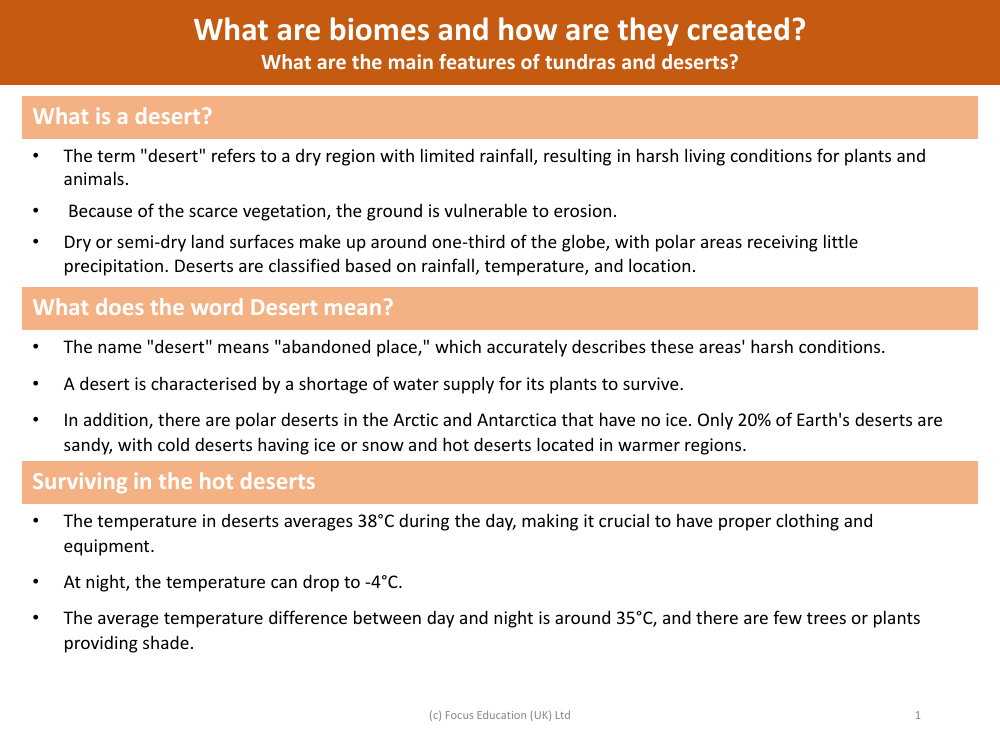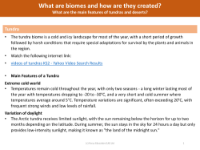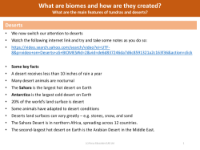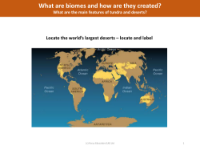What is a desert? - Info sheet

A desert is defined as a barren region that experiences very little rainfall, creating a challenging environment for flora and fauna to thrive. These areas are characterised by sparse vegetation, leaving the soil exposed and prone to erosion due to the lack of plant cover. Deserts, which are dry or semi-dry land surfaces, account for about one-third of the Earth's surface. This includes not only the hot, sandy landscapes typically envisioned but also polar regions where precipitation is minimal. Deserts are categorized by various factors such as the amount of rainfall they receive, their temperature ranges, and their geographical locations.
The origin of the term "desert" is rooted in the notion of an "abandoned place," a fitting description given the extreme conditions often found in these areas. Deserts are particularly noted for their limited water resources, which severely affects the survival of plant life. Contrary to popular belief, only 20% of the world's deserts are covered with sand. There are also cold deserts, which can be icy or snowy, and hot deserts situated in warmer climates. Surviving in hot deserts requires careful preparation due to the extreme temperatures, which can soar to an average of 38°C during the day and plummet to around -4°C at night. The significant temperature variation, combined with the scarcity of shade-providing trees and plants, makes these environments some of the most inhospitable on the planet.







